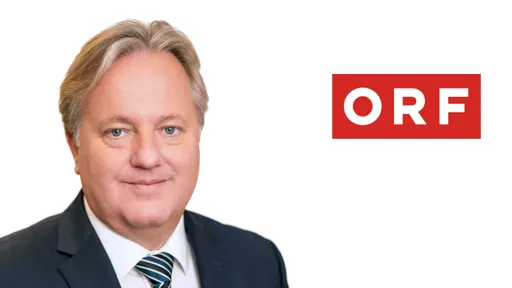
Harald Kräuter, Director of Technology and Digitalization, ORF
Digitalization and AI have led to increased competition for public service media. A bigger range of content needs to be produced and distributed across multiple channels and platforms – all while keeping costs low and maintaining consistent quality.
Efficiency is key. The shift towards digital is undeniable, where content must be accessible anytime and anywhere, and it needs to be different from linear formats. Meeting these requirements is only possible using innovative technologies and production techniques. In short, smart production is necessary.
Efficiency through innovation
Central to ORF’s smart production strategy is the idea of modern content-lifecycle management. Every piece of content is strategically designed for multi-platform distribution from inception, carefully tailored for specific audiences across linear television, streaming platforms and social media. This cross-media approach allows us to produce more flexibly and efficiently, helping ORF to expand its audience reach. This also requires updating our technical infrastructure, using advanced IT and network-based technologies, and transitioning to cloud and remote production.
Smart production revolutionizes the traditional production model by empowering editors and producers with more autonomy. The deployment of easy-to-use equipment such as mobile cameras, laptops, or powerful smartphones allows editors to work independently. This applies not only to the production process itself but also to editing, which can now be done remotely and at any time. A prime example of this flexibility is the use of the LiveU app, which enables mobile live broadcasts directly from smartphones.
Flexible employees
Success hinges on cultivating the right mindset across the organization. We need editors who are interested in technology and technicians who are programme-minded. While smart production challenges traditional roles and requires additional skills from production teams, the focus remains on fostering collaboration between technical and editorial departments.
Smart production is not embraced by everyone, as it demands more from producers, who are responsible for sound, image, distribution, or editing. There is also a requirement to provide effective training management and offer quick and uncomplicated support. Editorial and technical teams need to work closely and on an equal footing.
Smart production in public service media operates under a state of tension between innovation and quality standards. Smartphone productions are used, for example, in the news department or during international dispatches where costs would otherwise be too high. Content for the kids’ channel is exclusively produced using smartphones. ORF has also converted a van into a smart broadcast mobile unit with an integrated compact live control room for smaller or medium-sized productions. Smart production techniques are also used in large-scale events such as the Vienna Pride Parade, a multi-camera production with live positions throughout Vienna. However, it is necessary that employees have time to experiment. Mistakes happen, but it is important to learn from them.
In the field of smart production, pragmatism is key. It is used where it increases efficiency without compromising quality. Strict boundaries cannot be drawn – rather than setting rigid limitations, each production undergoes evaluation to ensure it meets public service standards. Smart production becomes an important tool strengthening the future of public service media without compromising our fundamental values.
This article first appeared in the March 2025 issue of tech-i magazine.
